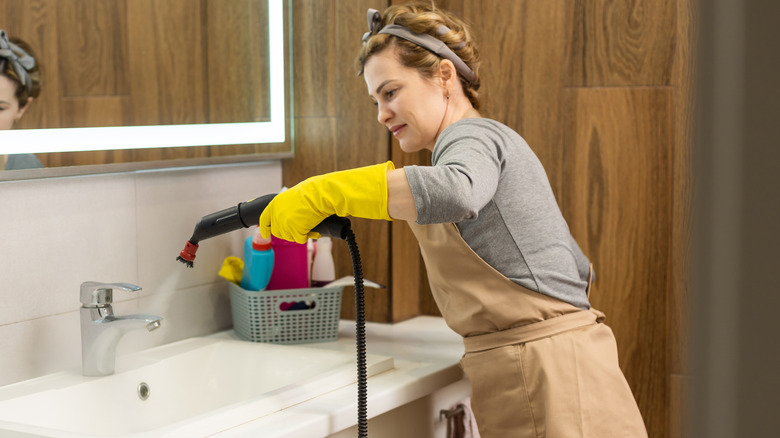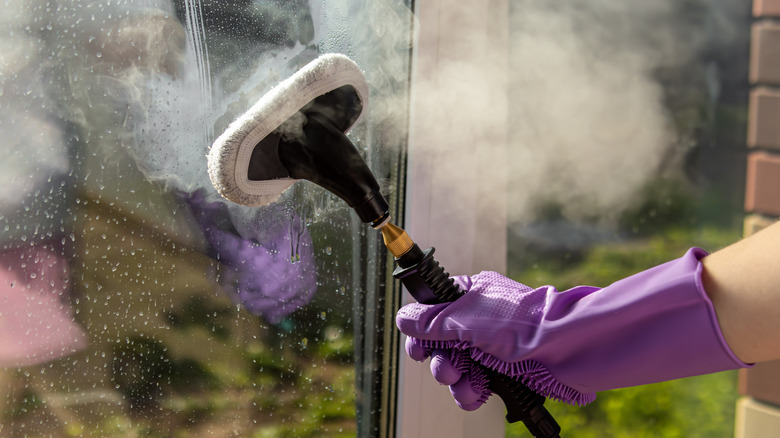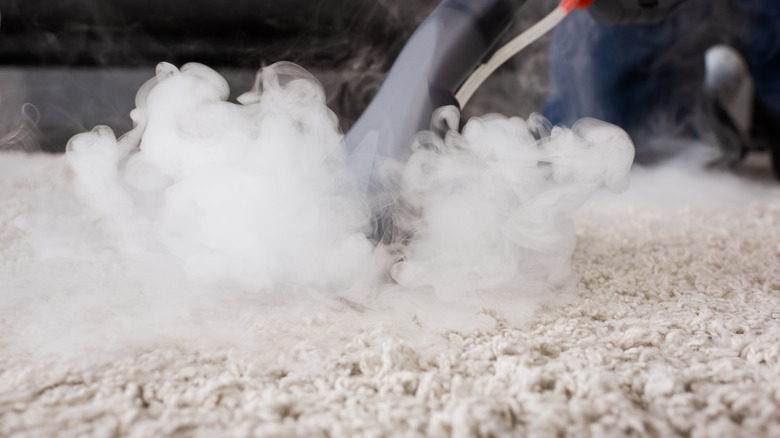Dangerous Downsides Of A Steam Cleaner You Should Be Aware Of
Whether you already own a steam cleaner or are considering buying one to help you remove gunk and grime from a variety of surfaces in your home, there are a few important things to keep in mind. Steam cleaners are often touted as a safer cleaning alternative. When used properly, they make it possible to kill viruses, mold, and germs without the need to use any toxic chemicals. However, despite being hailed as safe, there are some potentially dangerous downsides of using a steam cleaner that you should be aware of.
One of the biggest concerns is burns. As you probably know, steam is created by heating water. Steam is very hot and can burn your skin in mere seconds if you're not careful. Before you buy a steamer or pull yours out to use again, you'll want to learn more about this lurking danger and explore other precautions you can take to avoid getting burnt by your steam cleaner. You might also be surprised to learn about a few other downsides of steam cleaning that you might not have expected.
Steam can reach dangerously hot temperatures
You probably know that water has to come to a boil in order to release steam. So, it is logical to assume that a steam burn would be of the same severity as one caused by boiling water. However, a burn from hot steam can actually be more severe.
The reason ties back into why steam is such a powerful cleaner. As the steam comes into contact with the surfaces that you're cleaning, it releases energy during the transition from a gas to a liquid. However, that release of energy that effectively removes gunk and grime from your oven, grout lines, and other household surfaces can also cause even more serious burns if it takes place on your skin. The severity of the burns can vary from one situation to the next, but it is not uncommon to get a second- or third-degree burn.
If anyone gets their face too close to the hot steam that is being released, they may inadvertently inhale it. If those hot steam molecules travel down the windpipe, it can lead to swelling of the surrounding tissue. Known as epiglottitis, this condition should be treated by a medical professional immediately, as it has the potential to cause death.
You can minimize the risk of injury by taking precautions when using a steam cleaner. Always keep children away from the unit and take care to hold it properly and direct the steam away from your body. Wearing long pants, long sleeves, closed-toe shoes, and even heat-resistant gloves and safety goggles can also further minimize the risk of accidentally burning yourself as you clean.
Other potential downsides of using a steam cleaner
The risk of a burn isn't the only potential downside of using a steam cleaner that you will want to consider. If you use a steam cleaner on your carpets, it could potentially make your home less healthy. The problem with steam-cleaning a carpet is that the moisture can remain trapped in the fibers or the padding beneath the surface. If it doesn't dry quickly enough, it is possible that mold can start to grow — you don't want to be left figuring out how to remove mold from your carpeting, do you? Insects are also attracted to moisture, so leaving these layers damp could also open your home up to the bigger problem of a pest infestation. If you want to steam clean your carpets, it may be best to leave this job to the pros. The equipment that professional carpet cleaners use typically offers stronger suction to ensure that more water is extracted from the padding and carpet fibers.
There are other areas of the home you should avoid when steam-cleaning. The hot steam can damage several surfaces, including wood and vinyl floors, unsealed natural stone countertops, leather furniture, and silk and other delicate fabrics.


